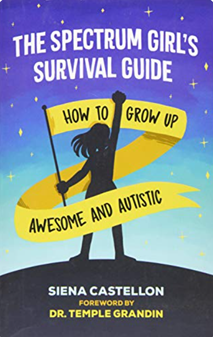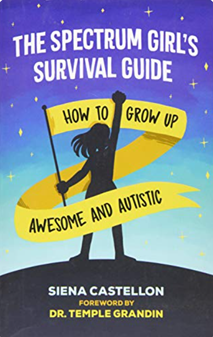Holly Beckwith, Head of Year 7 and Head of Politics, explores Siena Castellon’s book The Spectrum Girl’s Survival Guide. Holly says that it helped her, as a ‘neurotypical’ teacher, consider how a ‘neurodiverse’ student might view the world.
It was her chapter on mental health which I found most useful, particularly in its explanation of alexithymia, which is very common in autistic people.
The Spectrum Girl’s Survival Guide: How to Grow Up Awesome and Autistic was written by Siena Castellon when she was 16. She wrote the ‘guide’ so autistic teenage girls could read advice from another autistic teenage girl, rather than an autistic or neurotypical adult, by which she found most of the literature had been written. While teachers are not its target readership, I would argue it is an especially valuable read for us in seeking to better understand how we can support our neurodiverse students in addition to the pedagogical texts and research into cognitive science. It allowed me, as a neurotypical teacher, a view into the ways in which some of our neurodiverse students may see and experience the world differently as well as similarly to me. Reading her guide cultivated empathy that is more difficult to attain in other literature on neurodiversity.

She says of herself:
‘In many ways, I’m a typical teenage girl. I love music, binge-watching TV shows on Netflix, makeup, chocolate and my awesome dog, Rico. Yet there is one important thing about me that makes me very different from most teenage girls. I’m autistic. I’m also dyslexic and dyspraxic, and I have ADHD.’
Siena is very aware of her own individuality as well as some of the commonality she may have with others with autism and so while it is very much her own experience which is drawn upon, some typicality can be inferred. It is both these things that help us as teachers build empathy and understanding and thus enable us to alter our approach or consider how we can empower our neurodiverse students to identify strategies to cope with the school environment.
But we must be mindful that this is one person’s experience that is mostly drawn upon and at times this comes through very strongly – particularly in the passage on toxic teachers, which addresses some sad and what would have been for her, traumatic, experiences in her school years.
Siena dedicates chapters to topics such as dating, surviving school, fashion, making friends and gender identity. It was her chapter on mental health which I found most useful, particularly in its explanation of alexithymia, which is very common in autistic people and I characterised by three main difficulties:
- Difficulties in identifying what you’re feeling
- Difficulties in describing your feelings to others
- Difficulties in distinguishing between your feelings and the physical sensations related to an emotional response.
Siena shares stories of misunderstandings that have arisen since her emotions rarely match her facial expressions and the time delay she can have when it comes to identifying and processing emotions and I will share one here:
‘When our social battery is fully charged, we’re at our social best. As the social battery starts to drain, our social skills deteriorate until we reach the limit of our ability to socially interact. Social interaction comes at a price. It leaves us physically and emotionally spent. The only way for us to recover is for us to have time to ourselves so that can recuperate and recharge. […] When I’m at school, I try to ration my social battery so that it lasts the entire day. [..] When my social battery drains and my anxiety reaches critical levels, my ability to function drastically deteriorates. I become a lot clumsier, less tolerant of being touched, more rigid in my thinking, less able to cope with any changes in my schedule or routine and more sensitive to lights, noise and smells.’
Siena then offers a series of strategies she has used and encourages readers to identify their own in an empowering and encouraging way. This is Siena’s achievement and purpose – to address the challenges she faces candidly while also role modelling agency and ambition.

